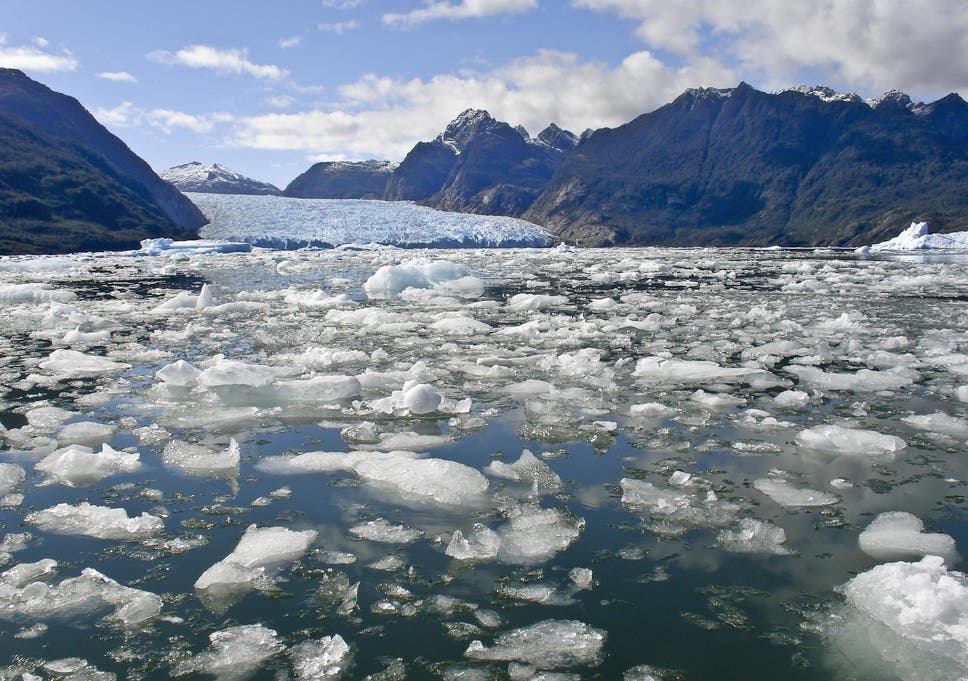
The polar ice caps and the Greenland ice sheet are melting six times faster than they were in the 1990s, according to the most complete picture of polar ice-sheet loss to date.
The high melt rate corresponds to the “worst case scenario” model for global warming set out by the Intergovernmental Panel on Climate Change (IPCC), and means that without sweeping curbs on greenhouse gas emissions, the planet will see a 17-centimetre rise in sea level in just 80 years, putting about 400 million people at risk of annual coastal flooding.
The research was carried out by a team of 89 polar scientists from 50 international organisations, and reveals that the combined rate of ice loss has risen from 81bn tonnes per year in the 1990s to 475bn tonnes per year in the 2010s.
This means that the polar ice sheets have already contributed a third of all sea-level rise.
The team behind the research – the Ice Sheet Mass Balance Inter-comparison Exercise (Imbie) – combined 26 separate surveys to compute changes in the mass of the Greenland and Antarctic ice sheets between 1992 and 2018.
Data from 11 different satellite missions was used, including measurements of the ice sheets’ changing volume, flow and gravity.
The findings are shocking. Greenland and Antarctica lost 6.4 trillion tonnes of ice between 1992 and 2017, pushing global sea levels up by 17.8 millimetres.
Of the total sea-level rise, 10.6 millimetres (60 per cent) was due to Greenland ice losses and 7.2 millimetres (40 per cent) was due to Antarctica.
Co-leader of the study, Professor Andrew Shepherd, from the University of Leeds, said: “Every centimetre of sea-level rise leads to coastal flooding and coastal erosion, disrupting people’s lives around the planet.
“If Antarctica and Greenland continue to track the worst-case climate-warming scenario, they will cause an extra 17 centimetres of sea-level rise by the end of the century.
“This would mean 400 million people are at risk of annual coastal flooding by 2100.
“These are not unlikely events with small impacts; they are already under way and will be devastating for coastal communities.”
The team said almost all of the ice loss in Antarctica – and half of that in Greenland – has been triggered by warming oceans melting their outlet glaciers. The remainder of Greenland’s ice losses are due to rising air temperature, which has melted the ice sheet at its surface.
Dr Erik Ivins at Nasa’s Jet Propulsion Laboratory in California, who also led the study with Professor Shepherd, said: “Satellite observations of polar ice are essential for monitoring and predicting how climate change could affect ice losses and sea-level rise.
“While computer simulation allows us to make projections from climate change scenarios, the satellite measurements provide prima facie, rather irrefutable, evidence.
“Our project is a great example of the importance of international collaboration to tackle problems that are global in scale.”
Guofinna Aoalgeirsdottir, professor of glaciology at the University of Iceland and lead author of the IPCC’s sixth assessment report, who was not involved in the study, said: “The Imbie team’s reconciled estimate of Greenland and Antarctic ice loss is timely for the IPCC. Their satellite observations show that both melting and ice discharge from Greenland have increased since observations started.
“The ice caps in Iceland had similar reduction in ice loss in the last two years of their record, but summer 2019 was very warm in this region which resulted in higher mass loss. I would expect a similar increase in Greenland mass loss for 2019.
“It is very important to keep monitoring the big ice sheets to know how much they raise sea level every year.”
The findings were published in the journal Nature.







